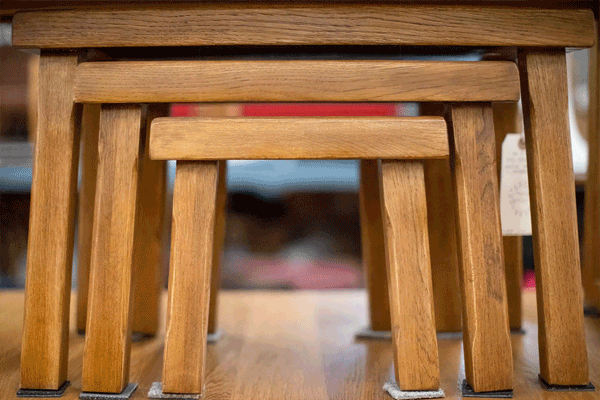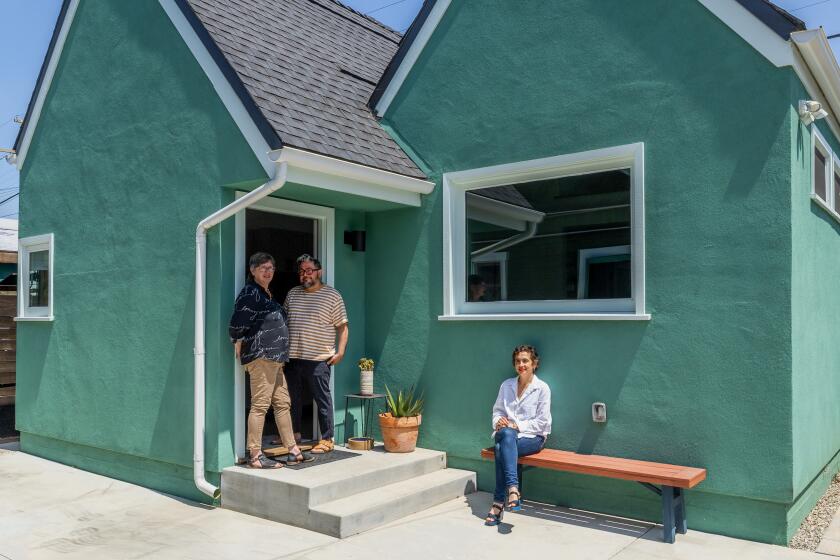With the Adirondack chair, necessity was the mother of invention
DESIGNED more than 100 years ago, the Adirondack chair has become an emblem of American summer -- a symbol of the country’s simpler virtues, “just like Mom and apple pie,” says Craig Gilborn, former director of the Adirondack Museum in Blue Mountain Lake, N.Y.
With its wide armrests, slanted back and steeply sloped seat, the chair has inspired umpteen incarnations -- even lightweight resin versions textured to look like wood. They sell for less than $20 apiece at hardware and garden stores, where many are tempted to sit a spell and see if the seat is more comfortable than it looks. It is.
Gilborn says that’s because the original, built around 1900 by Massachusetts aristocrat Thomas Lee, was tested repeatedly by at least 20 big and little members of Lee’s family. They all converged at the clan’s summer compound in the lake-dotted, heavily forested Adirondack Mountains of New York, where Yankee patriarchs built vacation homes so that their families could escape big-city heat.
One summer Lee found he had more family members than lawn chairs. Good lumber was plentiful, but his knowledge of chair-building was nil. So he tried tilting the backs and seats at various angles, asking each of the relatives to test the variations until an ideal comfort level was achieved.
“It was a long and hilarious process,” says Gilborn, author of “Adirondack Furniture and the Rustic Tradition.” He got a firsthand account of the event from Ann Lee in the 1970s. “She was in her 80s when I spoke to her,” Gilborn says, adding that as a 10-year-old, she was one of the testers “when her Uncle Tom did his chair-building thing.”
The original style was named the Westport, for the town where the Lees spent their summers. The back and seat were made of solid planks of grade-A lumber, not slats. And Lee never intended his chairs to be sold commercially, Gilborn says. In fact, Lee gave one of them as a gift to a local carpenter who had admired it. The carpenter, Harry Bunnell, saw the chair’s commercial potential, took out a patent without telling Lee and started producing the design.
The chairs sold along the East Coast and were eventually copied with small variations. The slatted back and seats evolved because solid planks of wood without knotholes, like those used by Lee and his carpenter friend, were more expensive and difficult to find, Gilborn says. For mass production, slats were more practical.
But the homespun integrity of the design has not disappeared, Gilborn adds.
“Even its name -- the Adirondack chair -- remains a salute to where it came from,” he says, “and what it once was.”
More to Read
Sign up for The Wild
We’ll help you find the best places to hike, bike and run, as well as the perfect silent spots for meditation and yoga.
You may occasionally receive promotional content from the Los Angeles Times.










